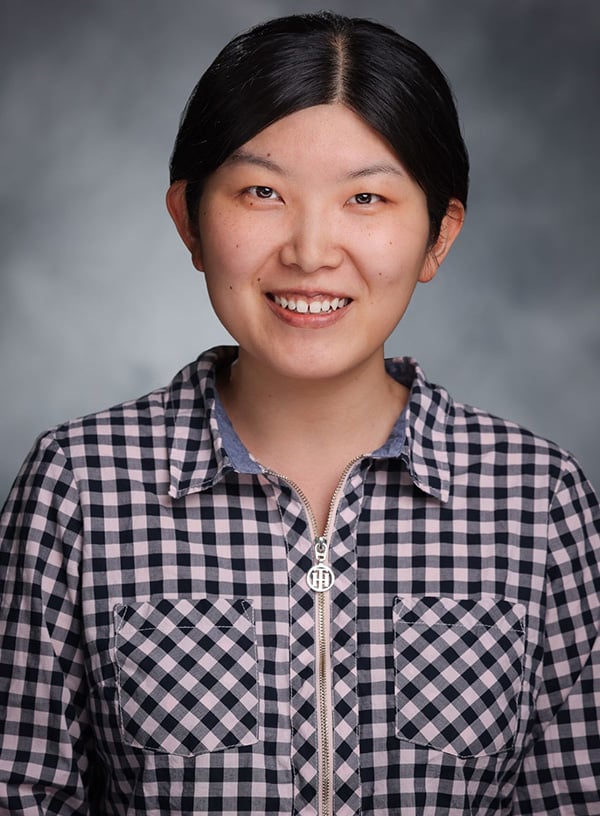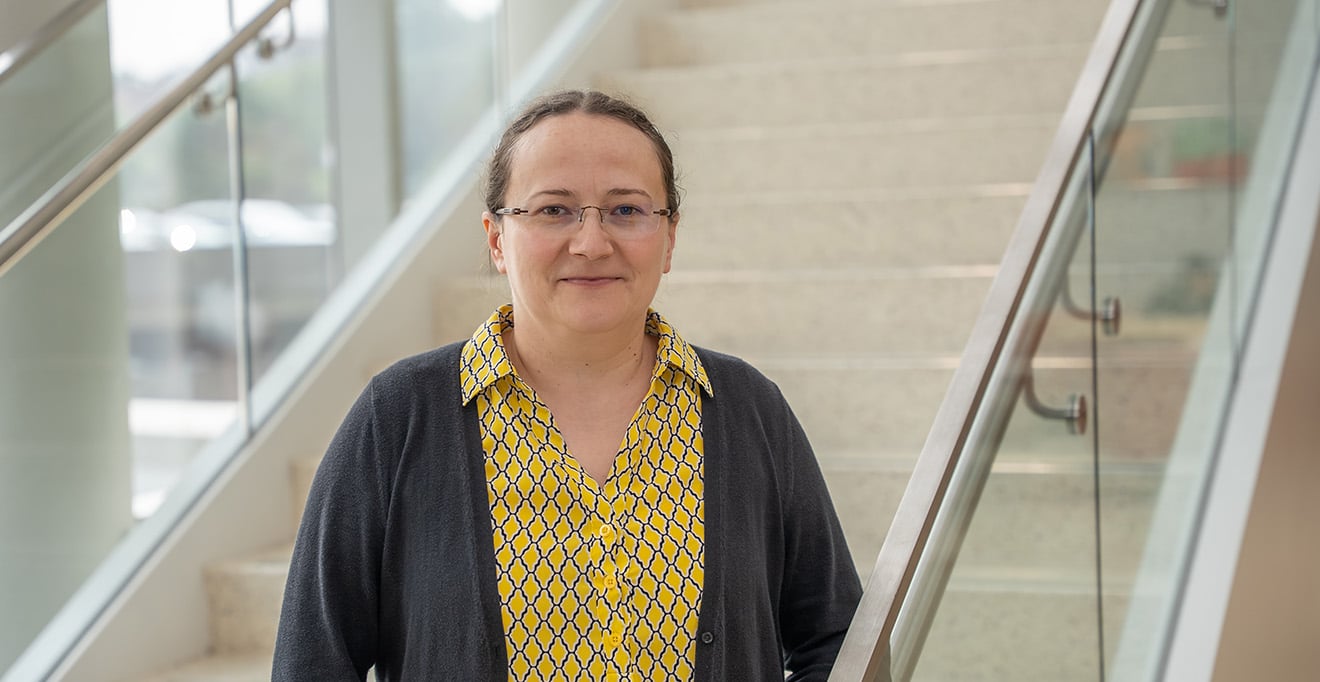Photo: Bryan Goodchild
Scientists at UMass Chan Medical School have explained how proteins that regulate gene function called transcription factors (TF) can increase genetic mutations by competing with DNA repair operations during genome replication. Published in Cell, these findings show that this natural rivalry between TFs and DNA repair can explain, in part, why TF binding sites show an increased mutation rate compared to the rest of the genome, especially in cancer cells.
Mutation rates vary greatly across the human genome, with some areas being far more prone to errors. Studies have shown that mutations at regulatory sites bound by TFs happen at a higher rate compared to the rest of the genome, but the reasons for this are not well understood.
“Cancer cells accumulate a lot of mutations. Some are more important than others,” said Raluca Gordan, PhD, professor of genomics & computational biology. “Our results show that many mutations prevalent in TF binding sites are less likely to be selected for cancer cell survival, and instead are the result of a natural competition between TFs and DNA repair, which means that such mutations should not be prioritized for screening and in-depth studies by scientists.”
The DNA mismatch repair mechanism is a crucial component in maintaining genetic fidelity from a parent cell to a daughter cell. Mismatch repair (MMR) proteins, like MutSα, scan the DNA of a daughter cell as it is being copied—a process called DNA replication—before cell division starts to ensure that it matches the parent cell. If the MMR protein finds a mistake, it signals the cell to cut out the DNA region containing the incorrect nucleotide and replace it with a correct sequence. This helps maintain genetic stability from one cell generation to the next.
Studying single nucleotide errors, however, is challenging for scientists. These errors are very rare, occurring at most once in every 1 million cell divisions.
“You can’t do a study based on one cell,” said Wei Zhu, PhD, a former student in Dr. Gordan’s lab at Duke University and now a postdoctoral fellow at Harvard Medical School. “You’d have to sequence millions and millions and millions of cells to assemble enough mutations to study this phenomenon.”

Photo: HuthPhoto, Durham, NC
Additionally, modern genome sequencing technologies aren’t accurate enough for this kind of work. Even the best technologies have an error rate in the thousands, which is far higher than the 1 in a 1 million rate of replication errors Gordan and colleagues were hoping to study. For small genomic areas, such as TF sites that span only 10 to 20 base pairs, quantifying mutations that result from replication errors is practically impossible with current sequencing technologies.
To overcome these challenges, Gordan and colleagues developed a mutagenic system using yeast genetics. This system allowed scientists to easily isolate and select cells for very specific mutations—down to the nucleotide—in TF binding sites. This technique allowed them to produce the quantity of nucleotide-specific mutated cells for testing.
They then tested these mutations to determine how well the TF protein, versus the MMR protein MutSα, bound to the DNA mismatch errors that gave rise to the mutations. What they found was that these mismatches were preferentially bound by the TF instead of MutSα. As a result, these mismatch replication errors were less likely to be recognized and fixed by MutSα and were instead being passed down to daughter cells. In following cell generations, these unrepaired mismatches then show up as mutations.
“From an evolutionary perspective it is easier for a cell to evolve a TF binding site than a gene,” said Dr. Zhu. “For this reason, you can understand how the TF-MMR competition that we discovered can, over time, lead to beneficial mutations that are selected and maintained by the organism. In cancer cells, however, this natural TF-MMR competition process can be problematic for two reasons. First, having more mutations in TF binding sites gives the cancer cells more mutations to select from for increased survival. Second, even when the mutations resulting from TF-MMR competition aren’t doing anything and are just along for the ride, they can obscure cancer-promoting mutations that now become harder to detect.”
Gordan and colleagues plan to model the formation of mutations in cancer cells to identify specific mutations that are more common in cancer but cannot be explained by this newly discovered TF-MM competition mechanism.
